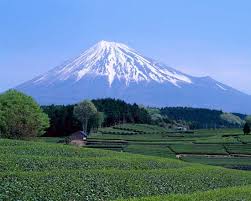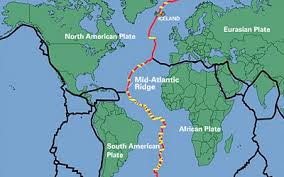The lesson objective in this lesson is
- Explain the different types of volcanoes that occur
Volcanoes are found at both destructive (subduction) and constructive plate margins due to gaps in the earth’s crust. The volcanoes that appear at these different plate boundaries are however very different.
Constructive boundaries occur when two plates are being pulled apart by the convection currents in the mantle (see above). This creates new land in the form of shield volcanoes.
Shield volcanoes have very wide bases and are very shallow sides.
The Mid-Atlantic ridge on which Iceland is found is the best example of the North American and Eurasian plate being pulled apart.
Composite volcanoes are found at destructive plate boundaries. Subduction forces the denser oceanic plate beneath the less dense continental plate. As the oceanic plate subducts it beings to re-melt due to the heat within the Mantle. This melting crust contains many impurities and water. As the crust melts it rises through cracks in the rock and forces its way to the surface resulting in composite volcanoes.
These volcanoes are much more explosive due to the impurities and form narrow steep sided volcanoes as the lava is much less runny (higher viscosity). At excellent example of a composite volcanoes is Mount Fuji in Japan.

 The following table outlines the main differences between the different types of volcano.
The following table outlines the main differences between the different types of volcano.





